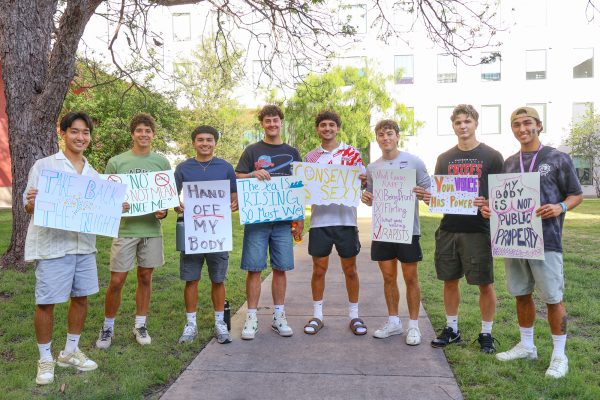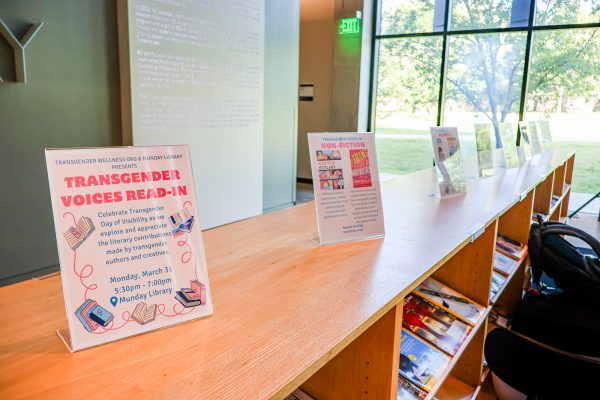#VanLife: How one hashtag created a flock to a nomadic lifestyle
Vanlife is a lifestyle of full-time living out of a vehicle. Oftentimes it is used to travel to remote locations to camp.
After becoming trapped indoors during quarantine for most of 2020, the idea of being free to roam each and every day is insatiable for some. Living and traveling in a vehicle was the solution many found — a lifestyle dubbed “van life,” popularized on social media by Foster Hunting who tagged his Instagram photos of DIY campers and buses with #VanLife starting in 2011.
What is #VanLife?
Over 11 million posts are tagged under #VanLife on Instagram, proving that the trend is a force to be reckoned with. The trend later found its way onto TikTok, a video sharing platform that makes it easy for creators to go viral due to its smart algorithm that shows users videos it calculates will interest them. The hashtag boomed during the height of the COVID-19 shutdown, attracting much attention to youth-seeking adventures and easy travel.
One search under the hashtag dedicated to van life opens one up to millions of posts of people sharing their experiences on the road. From how they converted their van, to what they’re eating, safety tips and even gorgeous photos of the views from where they’re parked — the trend is full of life online.
With COVID-19 changing the way many people work and live, those whose jobs were completely remote no longer had reason to stay tied to certain locations — and the rent that comes with it.
Who is part of #VanLife?
Van life has caught the eye of many people for differing reasons. For some, it’s a way to freely travel and seek out adventure in national parks. It gives them time to focus on hobbies such as outdoor recreational activities and allows them to experience a nomadic, off-the-grid lifestyle. For others, it’s an escape from the financial burdens of housing.
In April 2018, Outbound Living did a survey on 725 people who participated in van life. Of the participants, 51% reported that they lived part-time out of their vehicle, while 49% lived full-time. Texas even ranked No. 7 of the most populated states for van life, with California coming in at No. 1. There’s not a clear statistic on how many people in the U.S. live in their van; especially since many put their permanent address as that of a family member . In 2019, the Census Bureau estimated that there were over 140,000 people living in vans or other vehicles.
But in 2020, these numbers soared even higher as people found themselves with much more free time than normal and an ache to get outside. TikTok helped romanticize the idea of living on the road by making use of #VanLife and pairing videos of amazing views and picturesque roads to popular folk songs.
Video creators centering their content around their van lifestyle often interact with other users, answering questions and giving tips on how to start living out of your vehicle, too.
The community will only continue to grow as more people find the van lifestyle more fulfilling and financially stable than other options.
Risks and preparedness for living on the road
While the idea sounds like an absolutely perfect, care-free lifestyle, van living can come with its own hardships and dangers.
TikToks such as this one don’t show the days where one’s vehicle breaks down (proving difficult when it also acts as your home), the lack of space (especially when traveling with others) and most importantly, the safety risks of living in your vehicle.
Van life requires you to shower outside or in gyms, maintain your vehicle more often than usual and prepare food and places to sleep at night ahead of time. It’s not a comfortable lifestyle, but a little hard work makes it possible. Many TikTokers recommend apps such as iOverlander for finding campsites and running water. Resources such as these can help one plan out where to camp, find food or even get gas for their vehicle.
Like buying security for your home in case of a break-in, a moving home needs the same thing. Vans can be broken into, and it can be much scarier when in the wilderness of a campsite. Many van-lifers on TikTok and Instagram suggest purchasing portal alarm systems, cameras and relying heavily on alerts from the dogs they travel with.
Most recently, the conversation surrounding couples living alone in their vehicles and domestic disputes when your home is small and remote has surfaced after 22-year-old Gabby Petito was found dead after traveling full-time in a van with her financé, Brian Laundrie. While van life isn’t the entire cause for this tragedy, it doesn’t give victims an easy way to leave.
If you feel prepared, start planning ahead to join the millions of other van-lifers out there. Or, you can enjoy their adventures from the comfort of four walls on your phone.

Hi y'all! My name is Elle. I am majoring in Communication with double minors in Spanish and Journalism. I have wanted to be a writer ever since I was a...







